- Home
- Exhibitions
- The Auspicious Art: Ivory Carving in Ming and Qing Dynasties
The Auspicious Art: Ivory Carving in Ming and Qing Dynasties
- 2019/4/24
- Exhibitions
- Comments Off on The Auspicious Art: Ivory Carving in Ming and Qing Dynasties

Exhibition Time: 2019-04-16–2019-06-23
Hosted by: Jinsha Site Museum
The ivory, softy and smooth like the flawless jade, is the perfect material to be engraved and it’s hardly shattered. Hence, it was widely used by people since the Neolithic Age. Besides, in Chinese, the character ‘elephant’ is the homophobic word of the character ‘propitious, which also bestows the ivory products a propitious implication in traditional Chinese culture, that is, ‘bringing the good fortune and warding off the evil to relieve the uneasiness and bring peace and tranquility.
On April 16, 2019, ‘The Auspicious Art— Ivory Carving in Ming and Qing Dynasties’ will open up in Jinsha Site Museum. Many ancient ivory products and valuable ivory sculptures of Ming and Qing dynasties will be displayed. They come from six state-owned collecting entities including the Sichuan Museum, Chengdu Cultural Relic and Archaeology Research institution, Dongguan Museum, and Chen Clan Ancestral Hall. They vividly show the magnificent and wonderful Chinese arts and crafts. Besides, the exhibition also cooperate with International Fund for Animal Welfare. Through multimedia and interactive display, they also focus on elephant conservation, which is also a global issue, to implement the ecological civilization construction while carrying forward the culture and memory.
Such splendid and glorious artistic ivory cravings have witnessed the lights and shadows of thousands of years. Just like plucking the dawn blossoms at dusk, they leave the intoxicating beauty of art and crafts for the offspring. What’s more, this exhibition also reminds us to treasure the material carriers of this kind of art— the ivory and the elephant. The last part of this exhibition——‘Living with the Elephants’, specifically gives the account of related contents including the history and current conditions of elephant conservation, and the prohibition of elephant, reminding the audiences to focus on the destiny of elephants when appreciating this kind of Chinese intangible cultural heritage, and to object the meaningless chasing of the material of ivory itself.
The exhibition will last until June 23rd.

During the first half of the 19th century, tailored Mandarin fans started to gain popularity among westerners. The leaves were usually painted with oriental mansions and courtyards based on western imagination, with techniques such as perspective and chiaroscuro. Packed human figures were seen wearing silk robes; their facial contours were outlined manually and then veneered with ivories. Sometimes it was even the case for their hands. Such fans are called Mandarin fans.
During the mid-to-late 19th century when the Mandarin fan saw its efflorescence, its production had gradually become routinized. Even with different characters, their outlines were rigid and carving techniques were standardized.
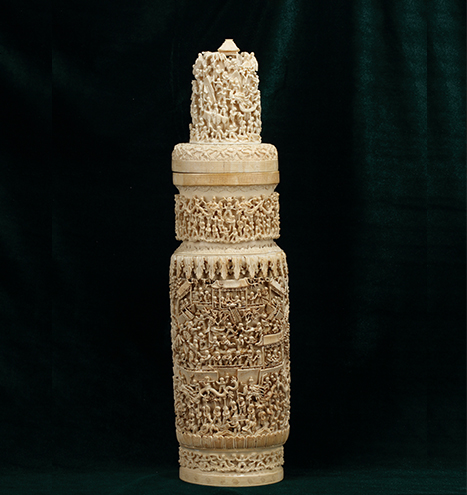
Ivory Pot 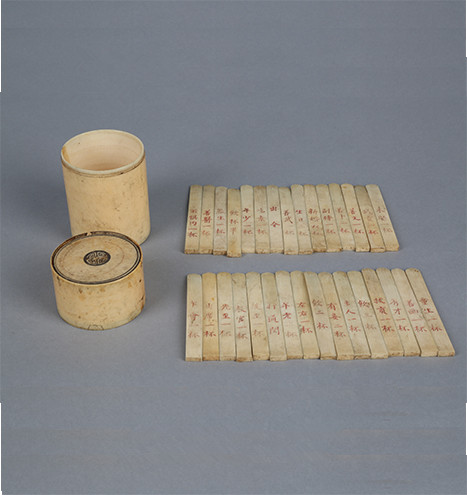
Drinker’s Wager Game Chip 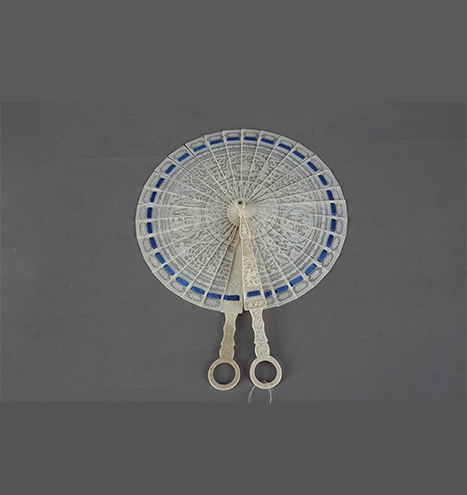
Cockade Fan

“Devil′s work ball” (a literal translation of the Chinese phrase while they more commonly referred to as Puzzle Balls internationally) is well known for its extraordinary craftsmanship. Made from a single piece of tusk, these balls perfectly showcase all kinds of carving techniques used in making its many layers, yet each layer can still turn freely, signifying a turn of luck with each turn.

Brisé fans are the earliest-known type of exported Chinese fans. The exclusive fan had no leaf but instead used dense-layered and broad ribs to form a natural surface when unfolded. Materials came from tortoise shells, sandalwood, gold, inter alia, ivory, which best produces the smoothness and exquisiteness of the fan. It is without doubt that the making of such fans requires excellent traditional Chinese craftsmanship.

From the end of the 18th century to the 19th century, business cards were widely used in both Europe and America, a card case was a must for elites. Among them, ivory card cases stood out with their intricate carving techniques and various decorative patterns, such as pavilions, landscape and figures, plants, flowers and custom-made badges.


Since the beginning of the 19th century, quality brisé fans had gradually faded into the public while those with paper leaves had been emerging fast. Most of the fans were double-sided. Some were decorated with copies of western prints; others were ornated by oriental scenes such as official yards and harbors. When the Chinese favored bamboo fans as a symbol of nobility, ivory-made-stick ones were the first choice for western customers. Engraving on sticks was on option since sometimes cleanliness was kept for the graceful nature of the untouched ivory.






During the first half of the 19th century, diversity started defining the fad for ivory fans in terms of their textures and techniques. The leaf derived raw materials from ductile paper, silk, and feathers, while the sticks were made of a mixture of ivory, sandalwood, tortoise shells, gold, silver, and other precious resources. Regarding carving techniques, the hollow-out method presents the due beauty of the ivory fans.

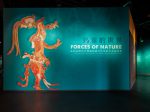
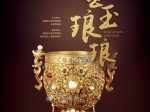
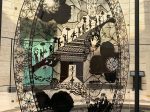
Recent Comments